巷弄的呢喃
Silent Conversations in the Alley
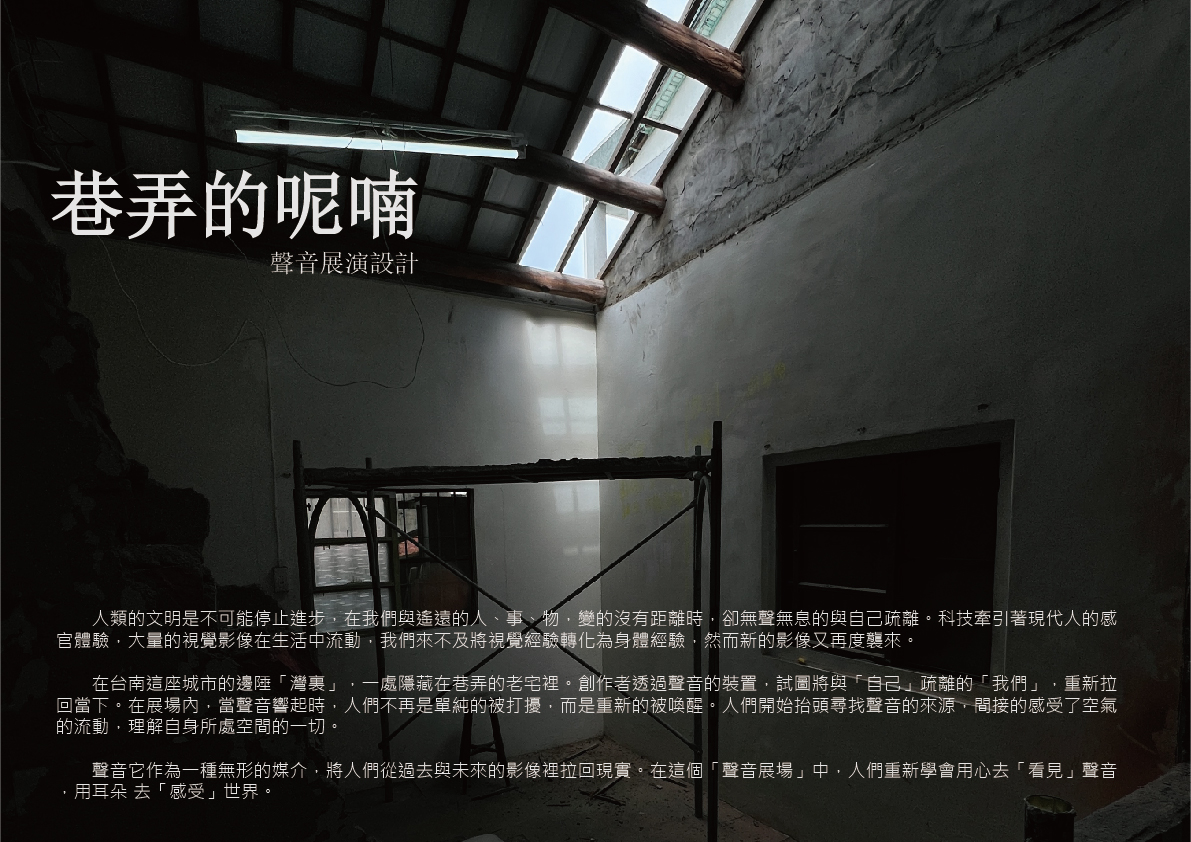
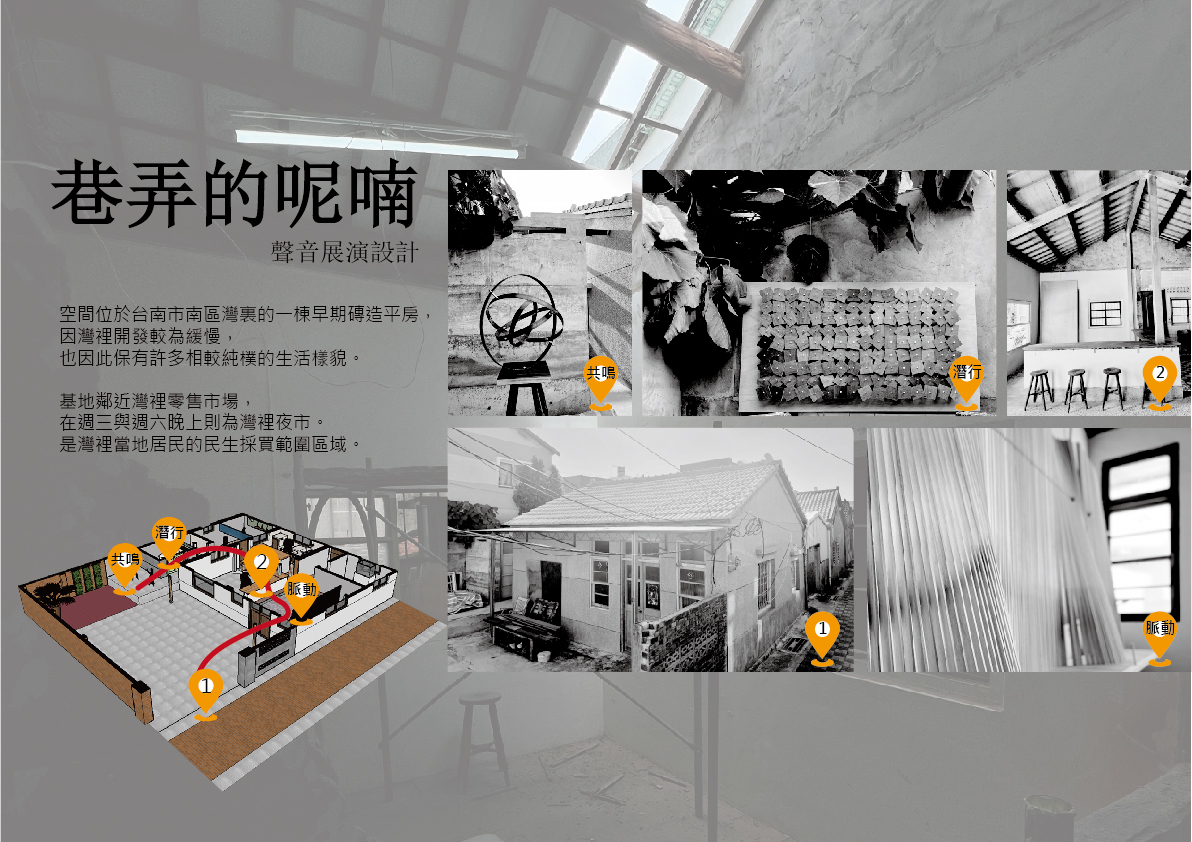
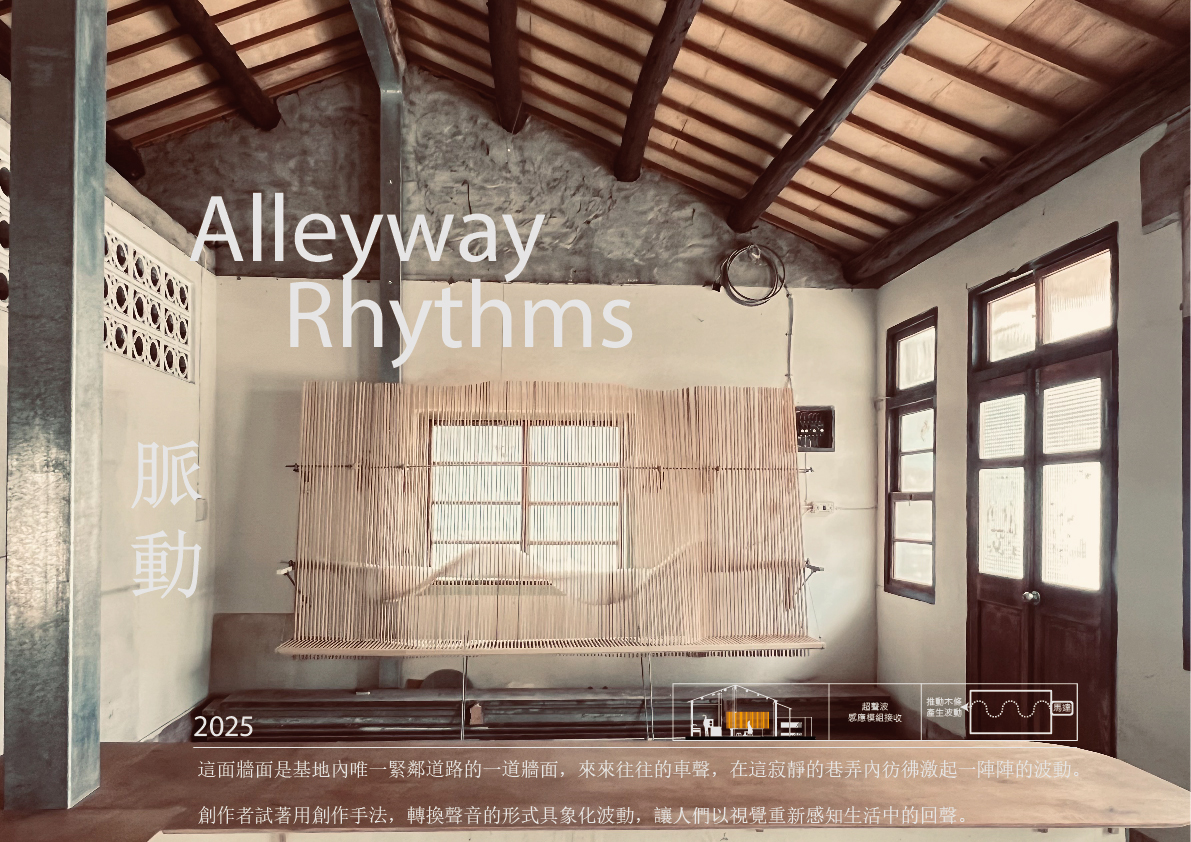
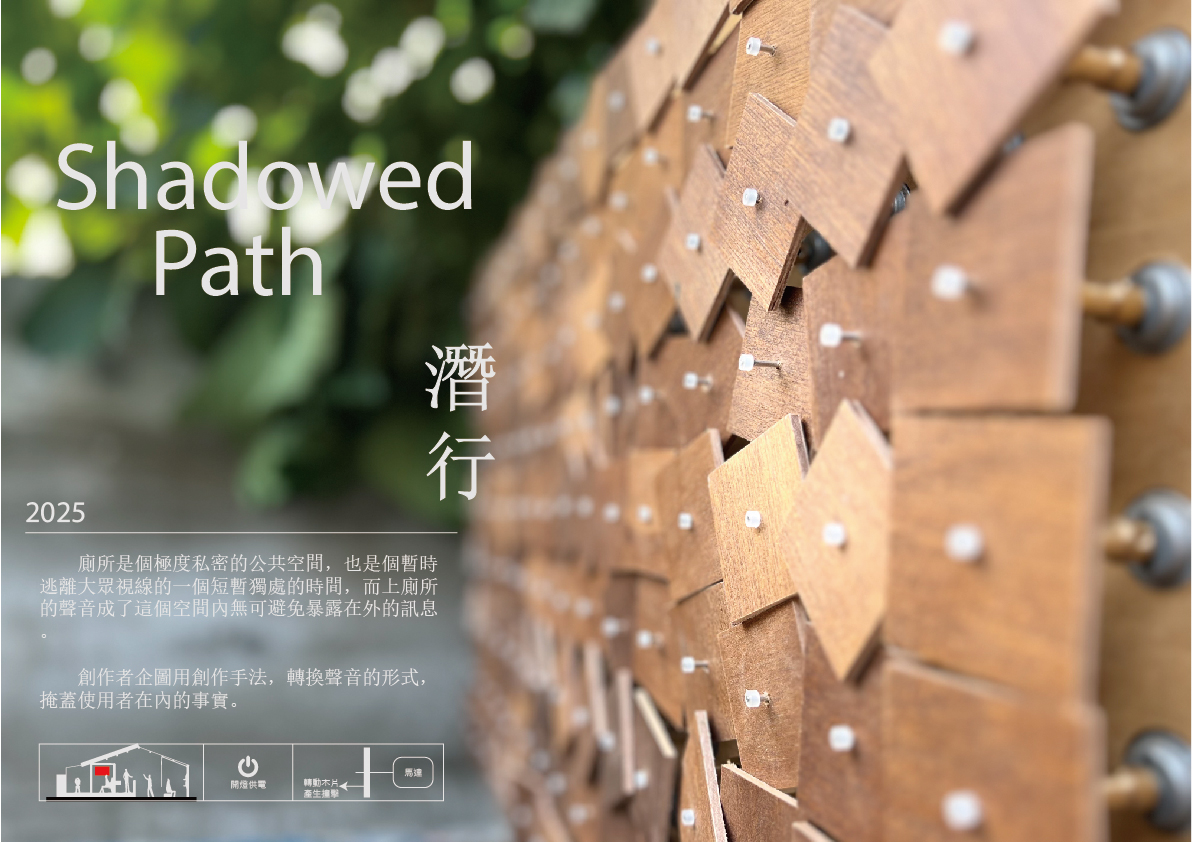
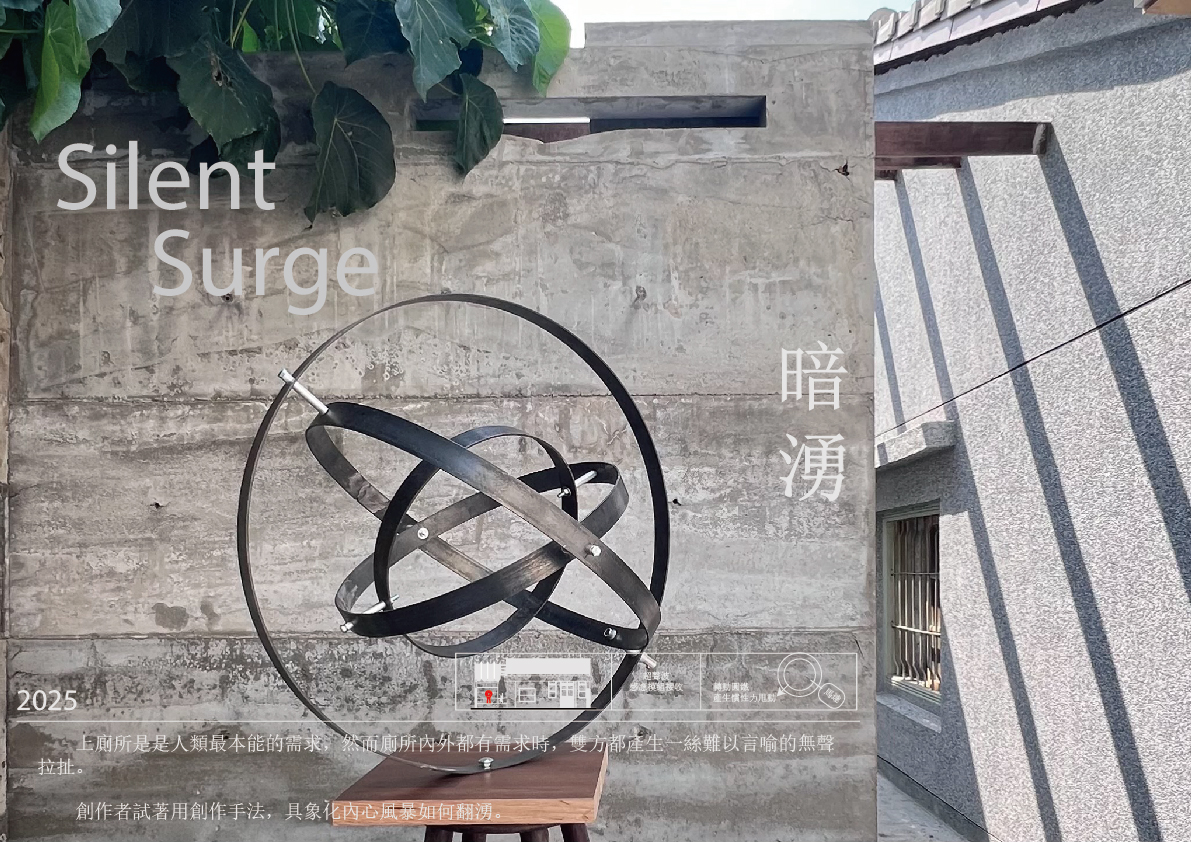
人類的文明是不可能停止進步,在我們與遙遠的人、事、物,變的沒有距離時,卻無聲無息的與自己疏離。科技牽引著現代人的感官體驗,大量的視覺影像在生活中流動,我們來不及將視覺經驗轉化為身體經驗,然而新的影像又再度襲來。
在台南這座城市的邊陲「灣裏」,一處隱藏在巷弄的老宅裡。創作者透過聲音的裝置,試圖將與「自己」疏離的「我們」,重新拉回當下。在展場內,當聲音響起時,人們不再是單純的被打擾,而是重新的被喚醒。人們開始抬頭尋找聲音的來源,間接的感受了空氣的流動,理解自身所處空間的一切。
聲音它作為一種無形的媒介,將人們從過去與未來的影像裡拉回現實。在這個「聲音展場」中,人們重新學會用心去「看見」聲音,用耳朵 去「感受」世界。
Silent Conversations in the Alley
It is impossible for human civilization to stop progressing. When the distance between us and distant people, things and objects becomes closer, we are silently alienating ourselves. Technology drives the sensory experience of modern people. A large number of visual images flow in our lives. We don’t have time to transform visual experience into physical experience, but new images come again.
In "Wanli", a border town in the city of Tainan, there is an old house hidden in an alley. Through the sound installation, the creator attempts to bring "us", who are alienated from "ourselves", back to the present. In the exhibition hall, when the sound is heard, people are no longer simply disturbed, but awakened. People began to look up to find the source of the sound, indirectly feeling the flow of air and understanding everything about the space they were in.
Sound, as an invisible medium, pulls people back to reality from images of the past and the future. In this "sound exhibition hall", people learn to "see" sounds with their hearts and "feel" the world with their ears.